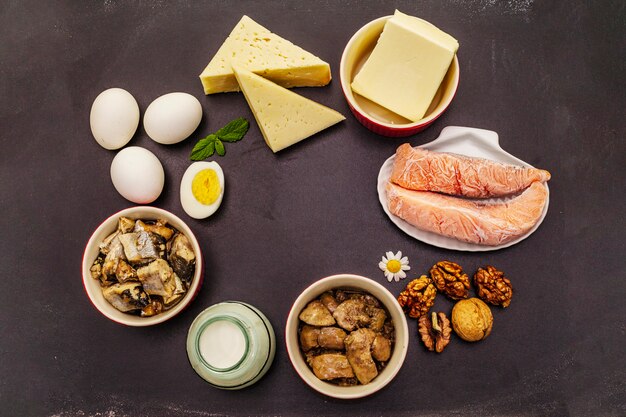Navigating the World of Gout: Foods to Watch Out For
Millions around the globe are affected by gout, a complex form of arthritis characterized by sudden, severe attacks of pain, redness, and swelling in the joints. If you've experienced these symptoms or live with the condition, you're probably familiar with how diet can trigger or alleviate these attacks. Let's explore what foods to be cautious about to help you manage gout more effectively.
Understanding Gout and Its Causes
Before diving into the dietary culprits of gout, it’s essential to understand what causes this painful condition. Gout occurs due to an excess of uric acid in the bloodstream, which can form sharp crystals in joints. Uric acid is a waste product formed when the body breaks down purines, naturally occurring substances found in certain foods and drinks.
What are Purines? Purines are compounds found in varying levels in different foods. When you consume foods high in purines, your body breaks them down into uric acid. If your body produces too much uric acid or fails to get rid of it effectively, it can lead to gout.
Why do Uric Acid Levels Rise? Factors like genetics, kidney function, and overall health can influence uric acid levels. However, dietary choices play a significant role in managing these levels, providing a practical approach to controlling gout symptoms.
Food and Drinks that Raise Uric Acid Levels
High-Purine Foods
The most direct dietary cause of gout is the consumption of high-purine foods. These foods can spike uric acid levels, triggering gout attacks.
Red Meats and Organ Meats
- Liver, kidneys, and sweetbreads are infamous for their high purine content.
- Opt for leaner cuts or plant-based alternatives to reduce your purine intake.
Seafood
- Shellfish like shrimp, lobster, and crab, as well as fish such as sardines and anchovies, contain high levels of purines.
- Consider eating seafood in moderation and choosing alternatives like white fish, which generally have lower purine content.
Certain Vegetables
- While vegetables are usually a healthier choice, some like asparagus, spinach, and mushrooms have higher purine levels.
- Don’t avoid them entirely but be aware of your portions.
Alcoholic Beverages
Alcohol consumption, particularly beer, is another well-known trigger for gout.
- Beer is especially high in purines, which can exacerbate the condition.
- Spirits and wine appear to have a lesser effect but can still contribute to elevated uric acid levels when consumed excessively.
- Moderation is key: consider limiting intake or switching to non-alcoholic options.
Sugary Drinks and Foods
Sugary beverages and fructose-rich foods can also contribute to uric acid buildup.
- Soda and other sweetened drinks increase uric acid formation.
- High-fructose corn syrup, often found in processed foods and sugary snacks, is another culprit.
- Opt for water, tea, or natural juices and reduce your intake of packaged sweets for better management.
Foods that May Help Reduce Gout Symptoms
While some foods can provoke gout flare-ups, others may help prevent them.
Low-Purine Foods
Adopting a low-purine diet can help reduce uric acid levels.
- Dairy Products: Low-fat and non-fat options can be beneficial. They offer protein without high purine levels.
- Whole Grains: Foods like oats, brown rice, and whole wheat bread are good alternatives.
- Fruits and Vegetables: Most fruits and vegetables are safe for gout patients, with cherries believed to lower the risk of attacks.
Hydration and Uric Acid Levels
Staying hydrated is crucial for anyone managing gout.
- Water helps dilute uric acid and promotes kidney function.
- Drinking plenty of fluids daily can help your body flush out uric acid more effectively.
Lifestyle Changes
In addition to dietary adjustments, certain lifestyle changes can help manage gout symptoms.
- Maintain a Healthy Weight: Excess weight increases uric acid production and stress on affected joints.
- Regular Exercise: Helps maintain a healthy weight and reduces the risk of flare-ups. Avoid high-impact activities that strain the joints.
- Stress Management: High stress levels can exacerbate gout attacks. Practice relaxation techniques like yoga or meditation.
Meal Planning Tips for Gout Management
Navigating your diet when managing gout doesn't have to be daunting. Here are some strategies designed to help you plan effectively:
Plan Balanced Meals: Aim for balanced meals that combine low-purine proteins, complex carbohydrates, and lots of fruits and vegetables.
Mind Portions: Keep an eye on portion sizes, particularly when consuming foods containing moderate purine levels, such as poultry.
Meal Prep: Preparing meals in advance can help you make healthier choices and avoid reaching for high-purine fast foods.
Experiment with Substitutes: Use herbs and spices for flavor instead of rich gravies and sauces which can be high in purines and fat.
Empowering Your Path to Better Health
Managing gout through dietary choices is a powerful way to take control of your health. By understanding which foods to avoid and which to embrace, you can create a sustainable eating pattern that supports your well-being.
While food is a critical piece of the puzzle, remember it’s just one aspect of a holistic approach to managing gout. A supportive lifestyle combined with informed dietary choices can significantly enhance your quality of life, helping you navigate this condition with greater confidence and ease.
Quick Tips for Managing Gout
- 🚫 Avoid or limit red meats, organ meats, and shellfish.
- 🥤 Reduce consumption of beer, sugary drinks, and high-fructose foods.
- ✅ Choose low-purine foods like dairy, whole grains, and most fruits.
- 💧 Stay Hydrated: Drink plenty of water to help flush out excess uric acid.
- 🧘♂️ Combine diet with regular exercise and stress-reducing activities.
By integrating these tips into your lifestyle, you can effectively manage gout and enjoy a comfortable, fulfilling life.
